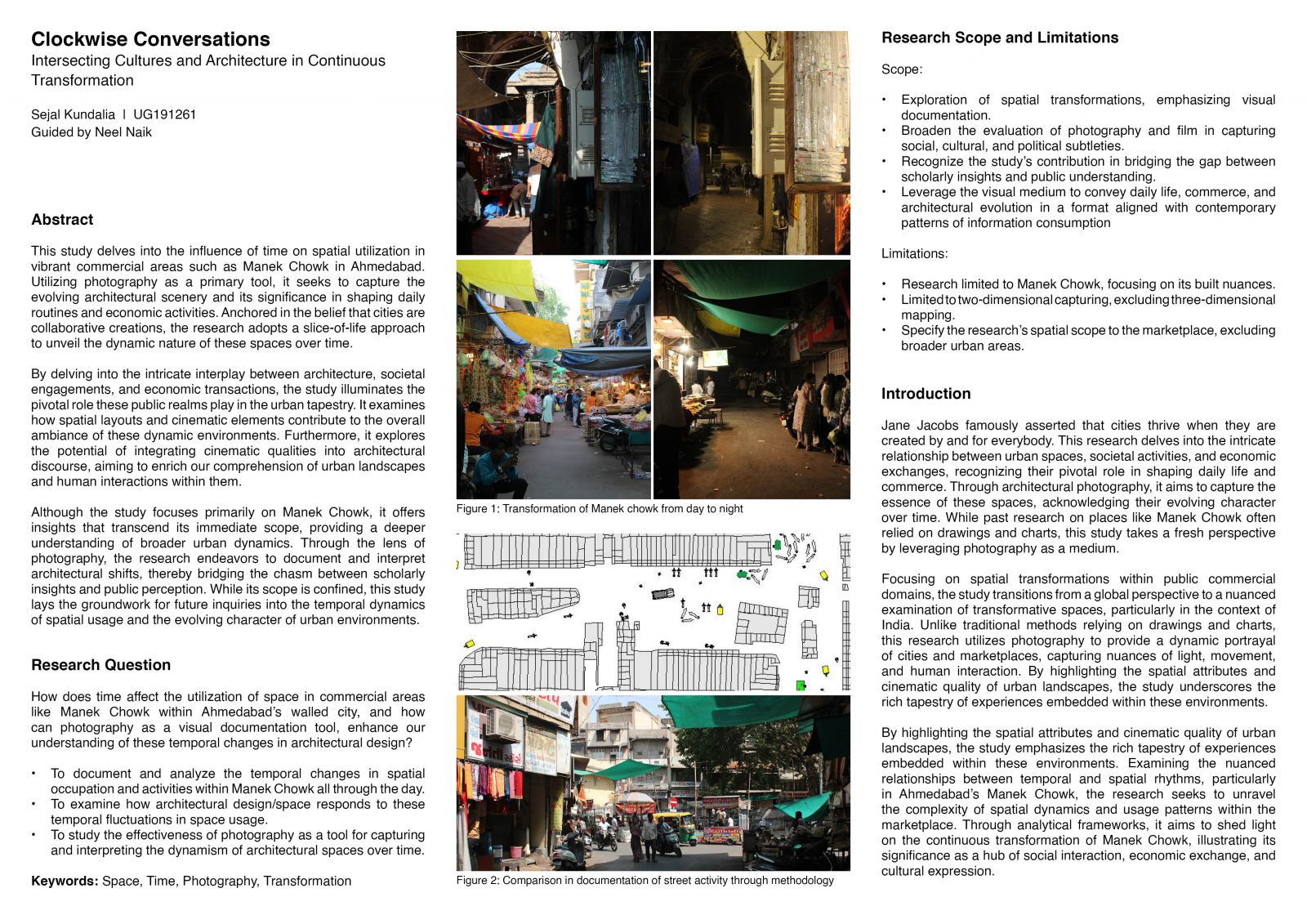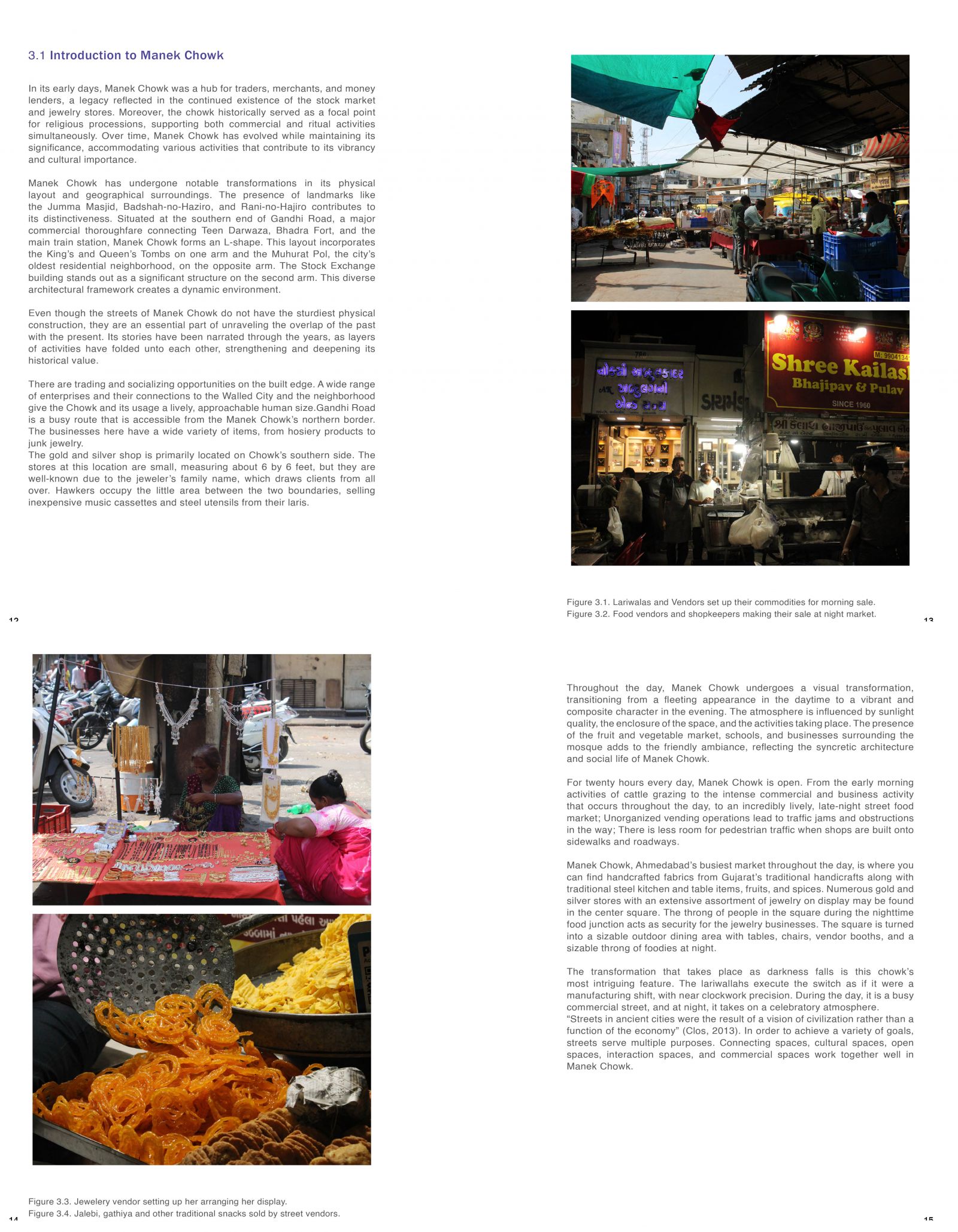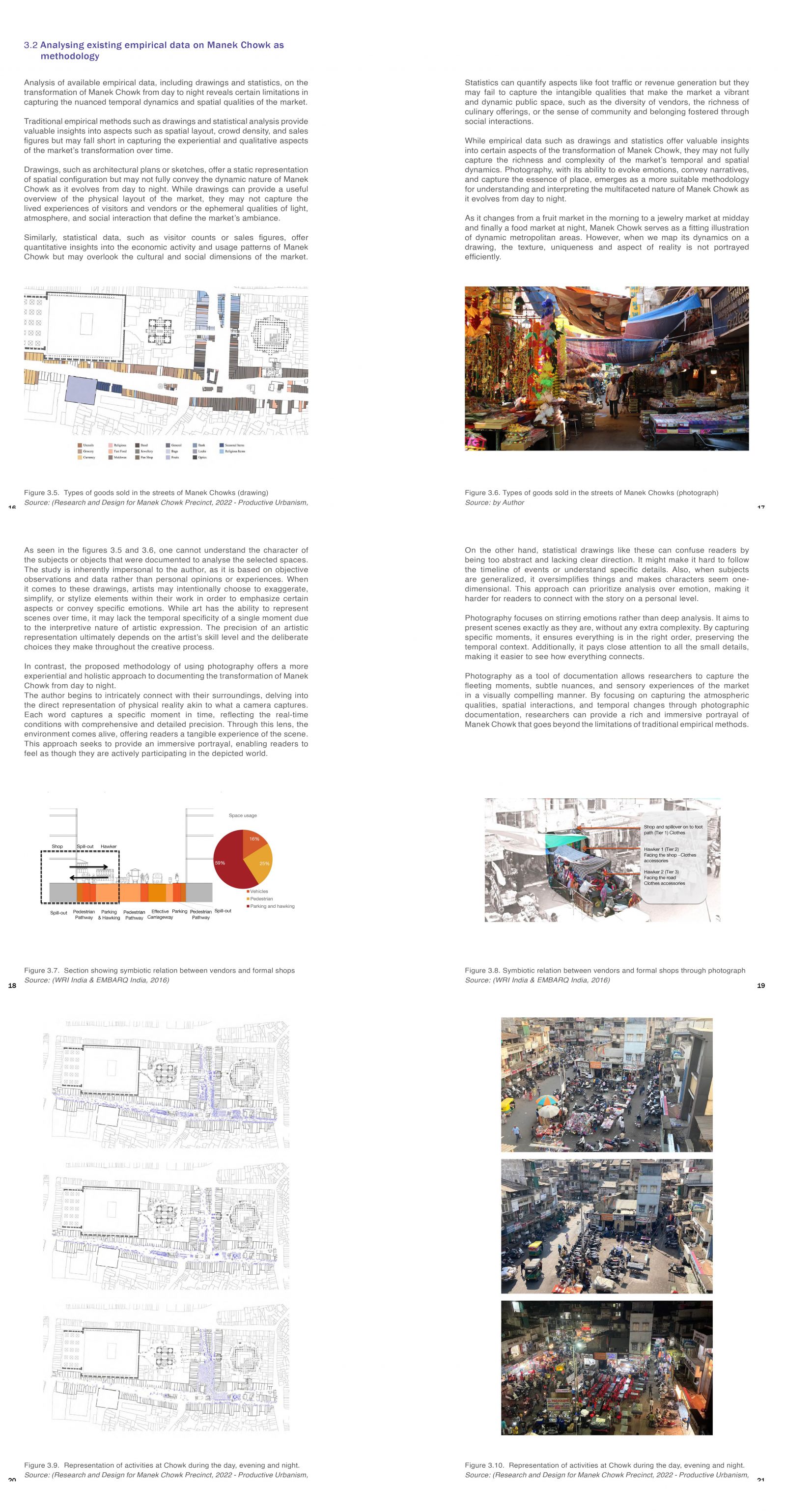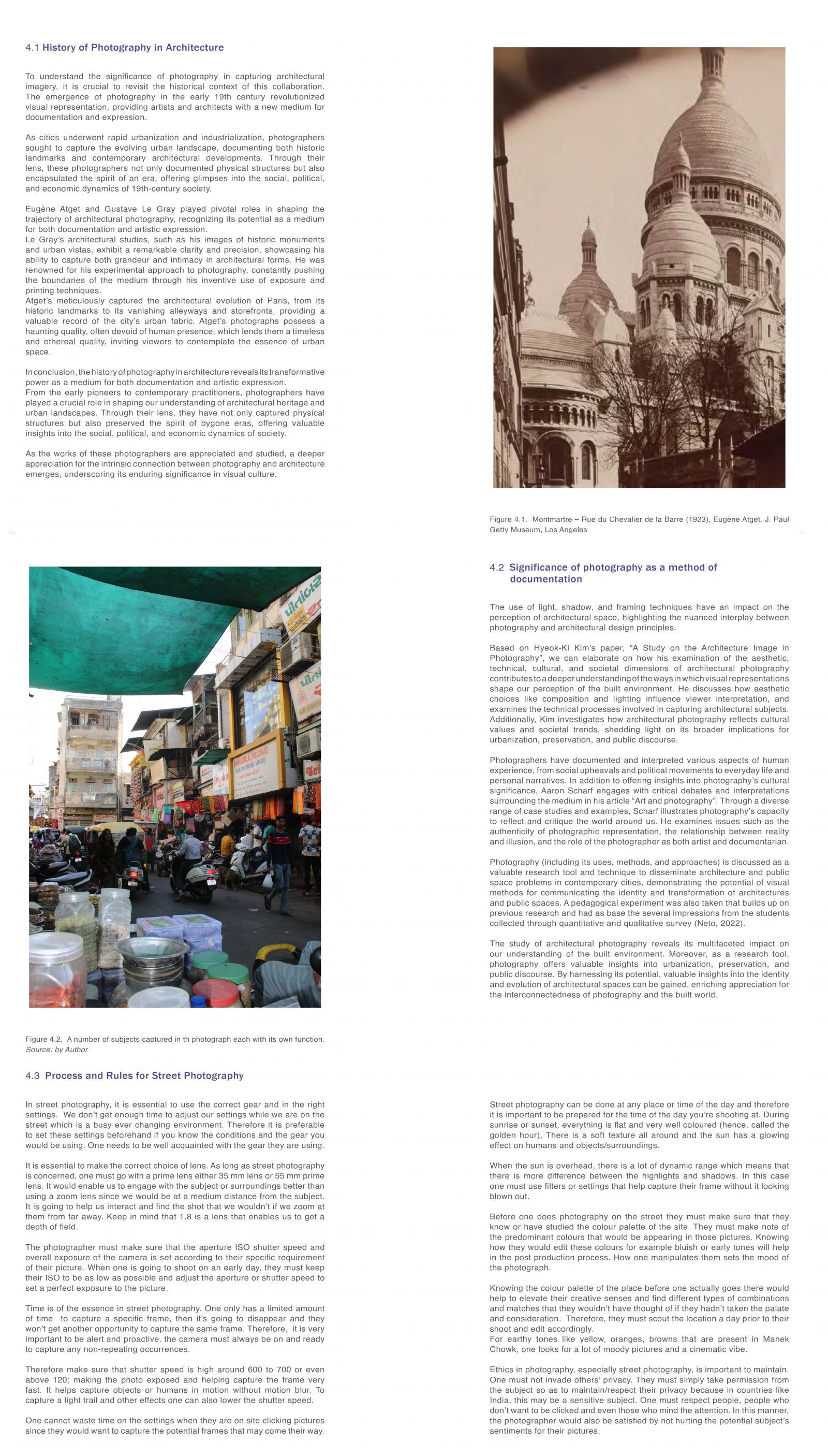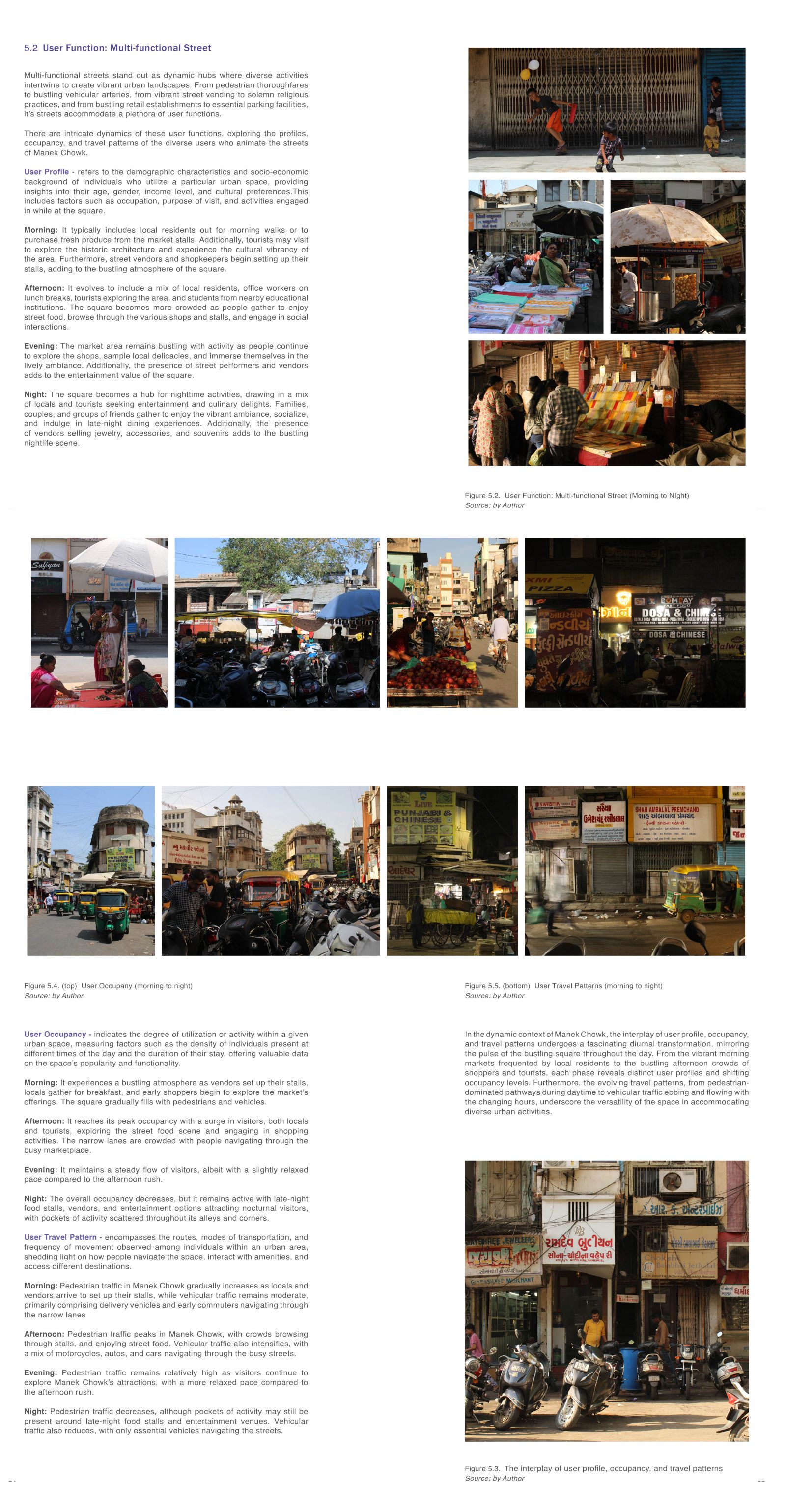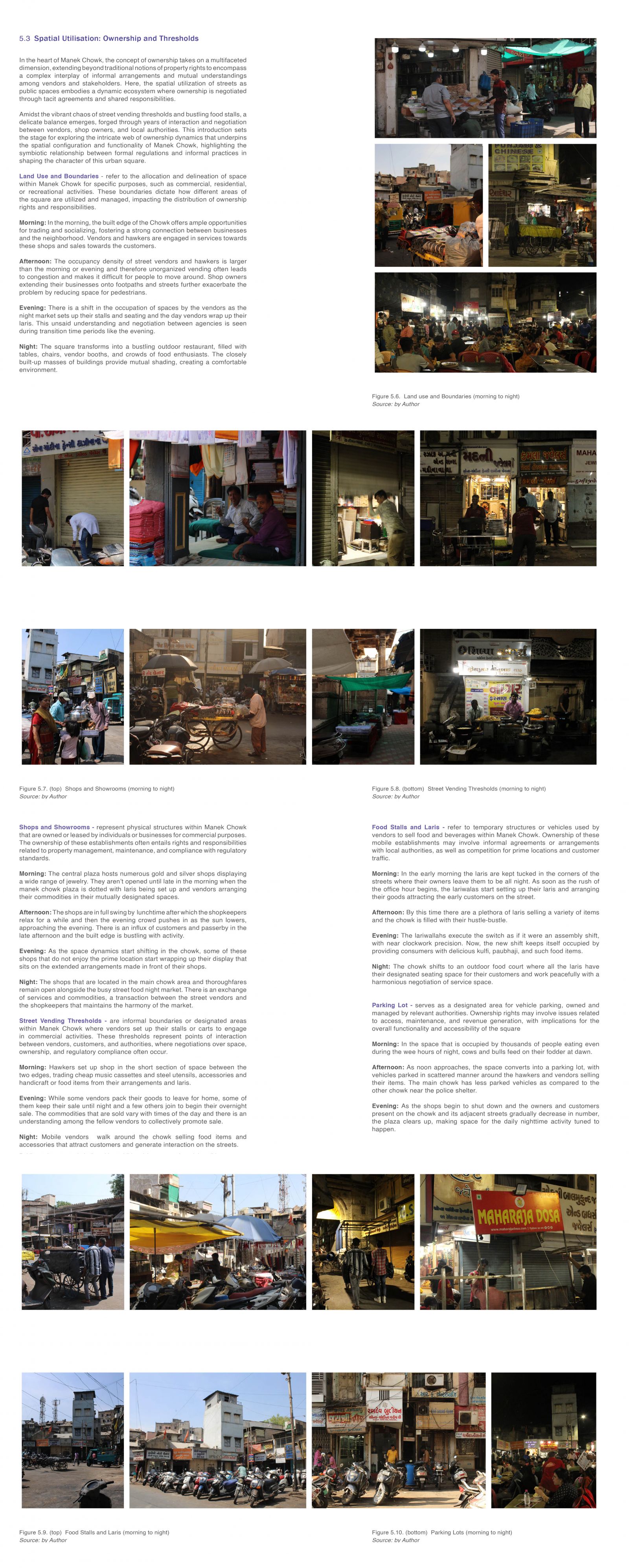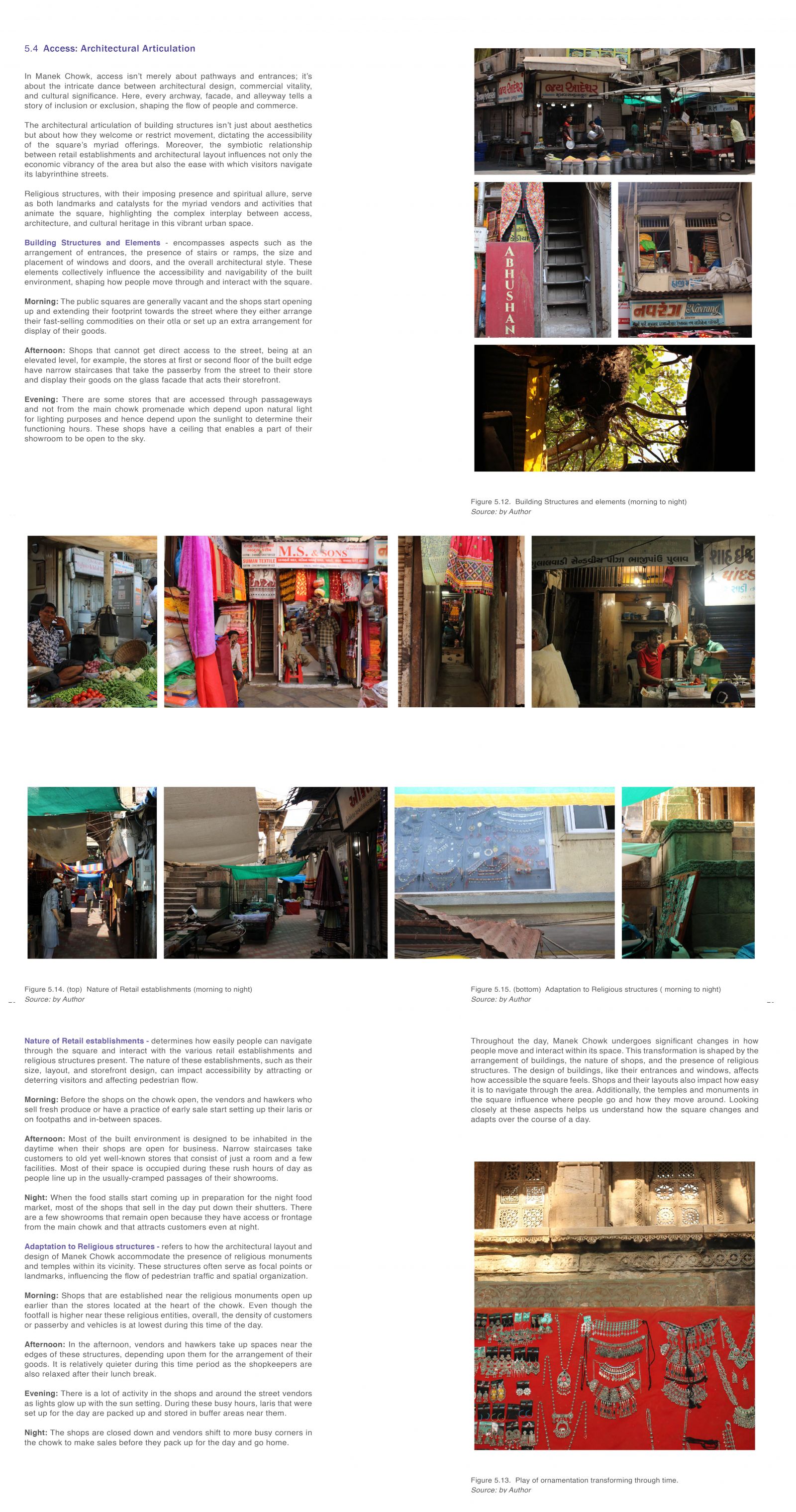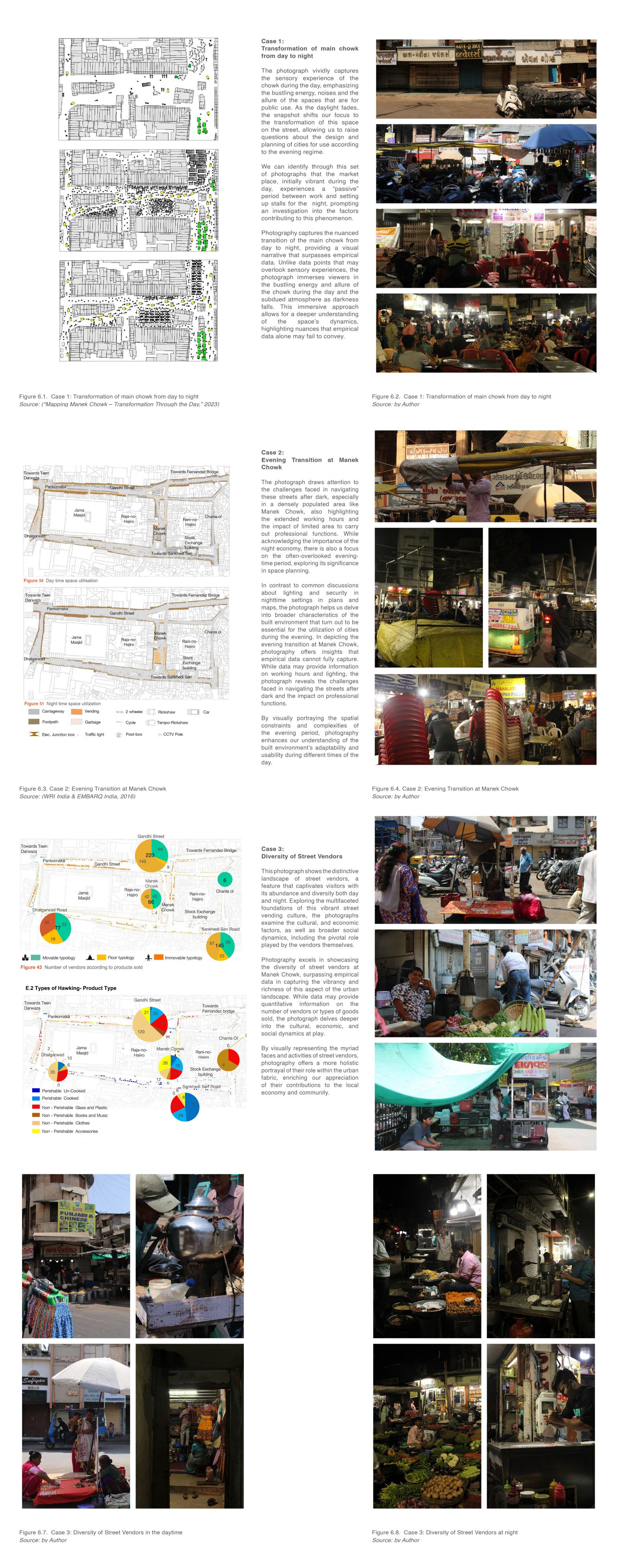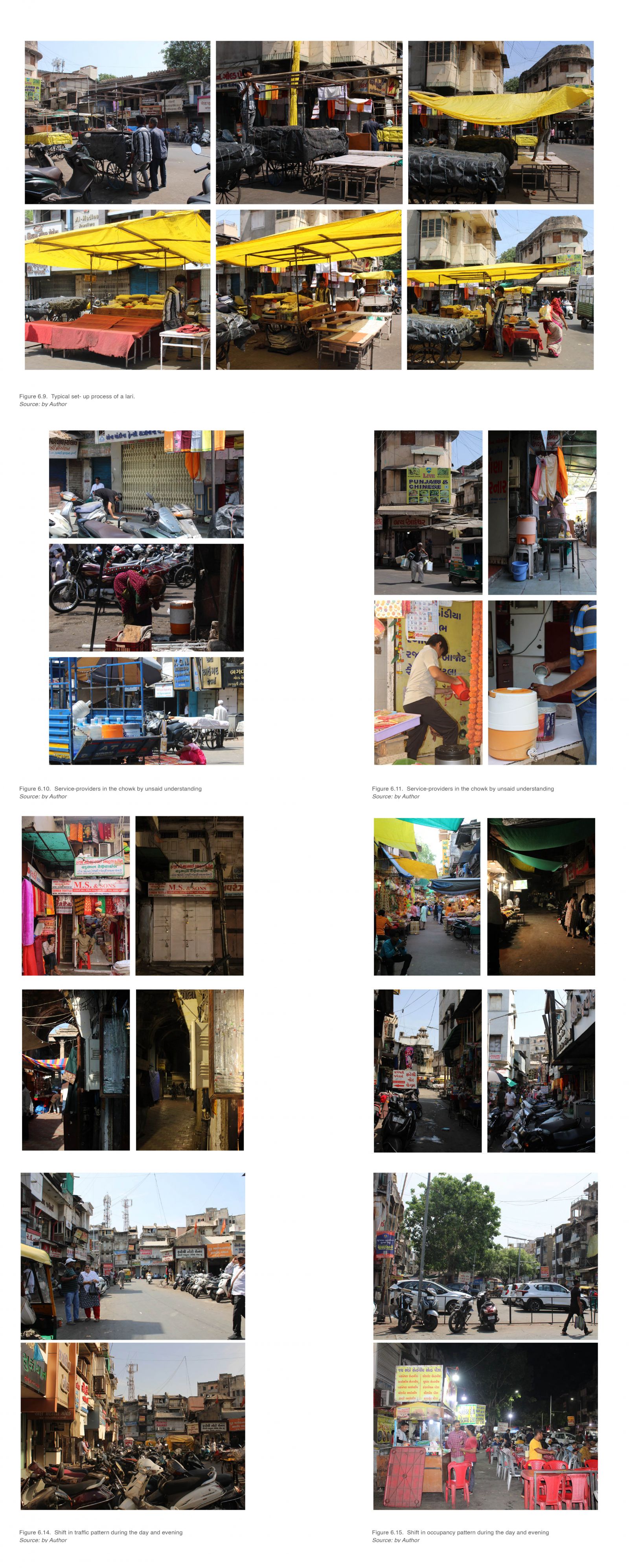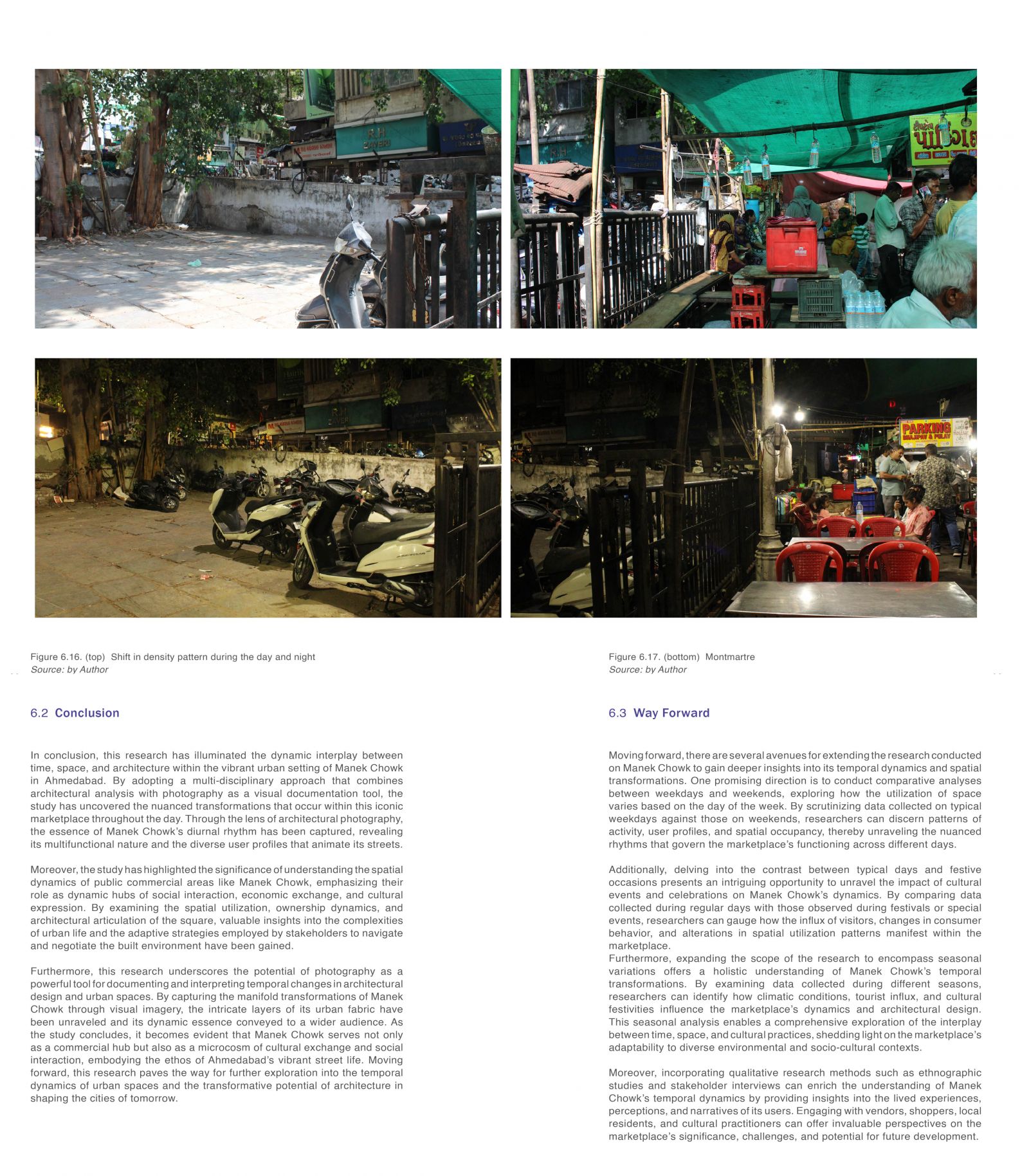Your browser is out-of-date!
For a richer surfing experience on our website, please update your browser. Update my browser now!
For a richer surfing experience on our website, please update your browser. Update my browser now!
This study delves into the influence of time on spatial utilization in vibrant commercial areas such as Manek Chowk in Ahmedabad. Utilizing photography as a primary tool, it seeks to capture the evolving architectural scenery and its significance in shaping daily routines and economic activities. Anchored in the belief that cities are collaborative creations, the research adopts a slice-of-life approach to unveil the dynamic nature of these spaces over time. By delving into the intricate interplay between architecture, societal engagements, and economic transactions, the study illuminates the pivotal role these public realms play in the urban tapestry. It examines how spatial layouts and cinematic elements contribute to the overall ambiance of these dynamic environments. Furthermore, it explores the potential of integrating cinematic qualities into architectural discourse, aiming to enrich our comprehension of urban landscapes and human interactions within them. Although the study focuses primarily on Manek Chowk, it offers insights that transcend its immediate scope, providing a deeper understanding of broader urban dynamics. Through the lens of photography, the research endeavors to document and interpret architectural shifts, thereby bridging the chasm between scholarly insights and public perception. While its scope is confined, this study lays the groundwork for future inquiries into the temporal dynamics of spatial usage and the evolving character of urban environments.
View Additional Work